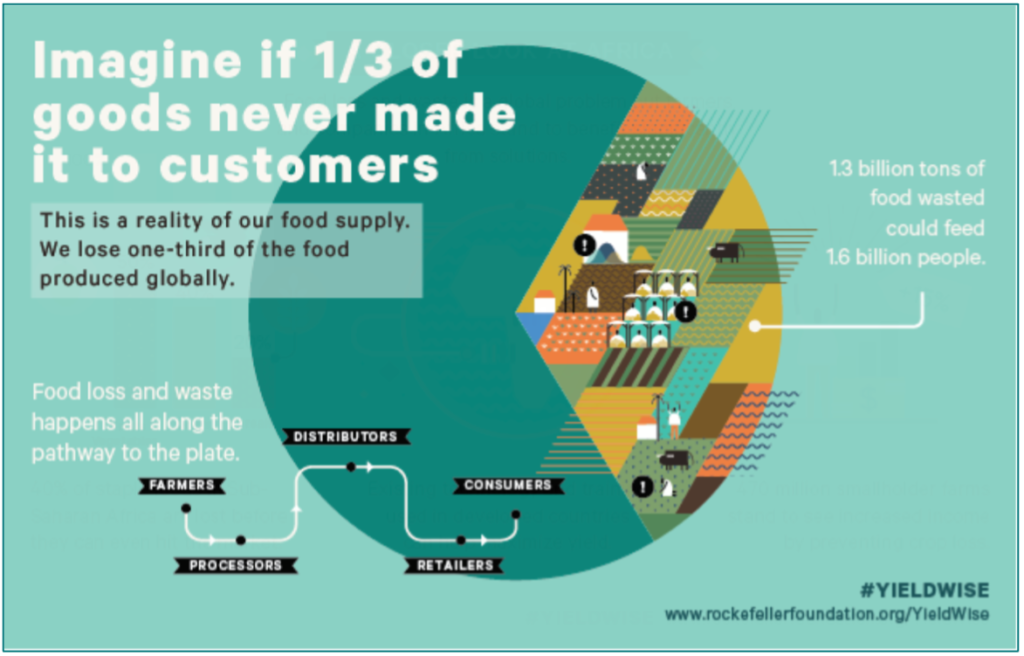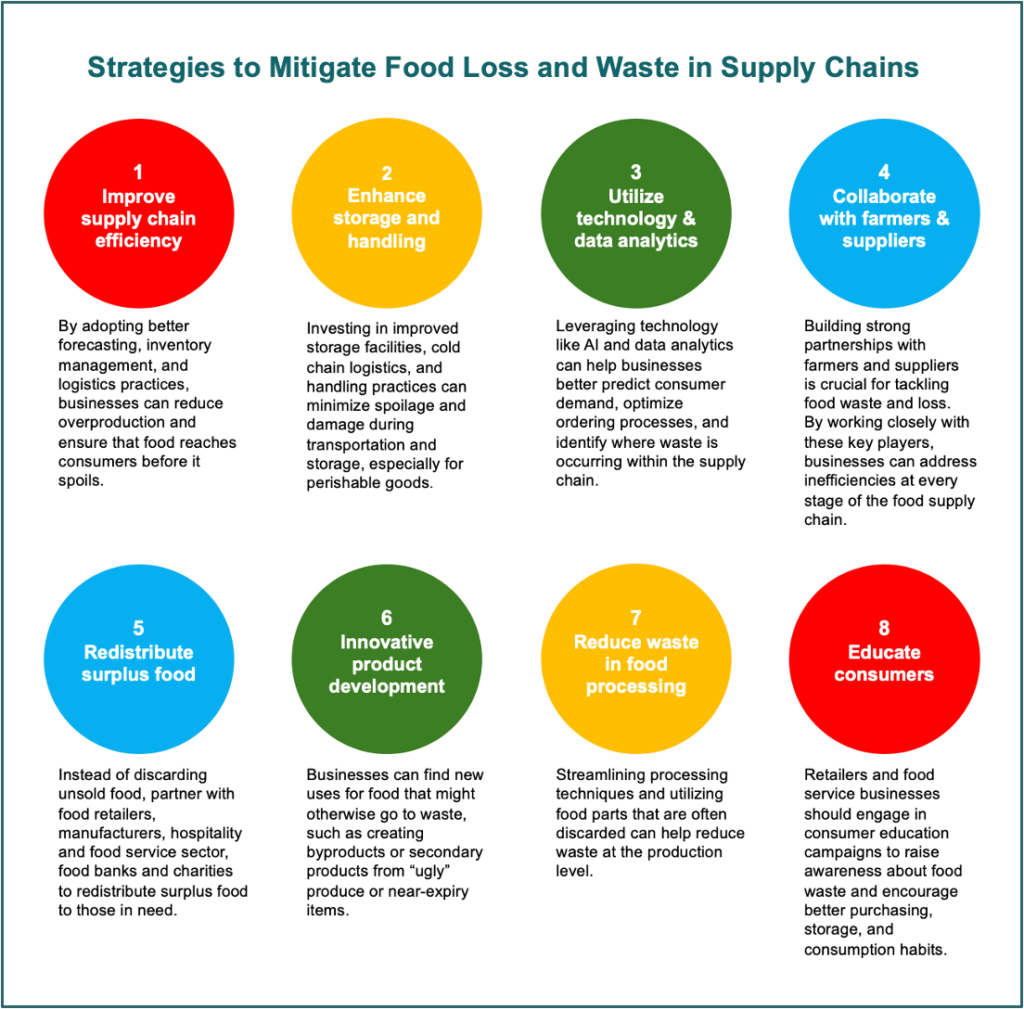The Food Waste Index 2024, released by the United Nations Environment Programme(UNEP), highlights the urgent global issue of food waste. In 2022 alone, over 1 billion tons of food was wasted, representing about 17% of available food. This waste not only threatens food security, it has significant environmental consequences, including greenhouse gas emissions and biodiversity loss. From an economic standpoint, food waste costs more than $1 trillion annually, straining economies and resources. These alarming statistics underscore the urgent need for improved practices in planning and coordination throughout the entire food value chain, from production to retail.
At the global level, households are the largest contributors to food waste, accounting for about 61% of the total waste. A similar trend is seen in Southeast Asian countries, where the average individual wastes approximately 82 kilograms of food annually. However, the dynamics of food waste and food loss in the region are shaped by unique factors within its food systems.
Food waste typically occurs at the retail and consumer stages, involving uneaten leftovers, expired items in kitchens, unsold bakery products from stores, and rejected “ugly” produce from markets. Food loss, on the other hand, occurs at the beginning of the supply chain, during post-harvest activities like processing, storage, and transportation, i.e. before food reaches supermarkets or consumers.

By 2033, the number of calories wasted and lost between produce leaving farms and reaching retail shops and households could be more than twice the number of calories currently consumed in low-income countries in a year.
Magnitude of food waste and food loss
Food waste is more prevalent in developed countries and higher-income regions, including urban areas, whereas food loss is a serious issue in rural areas due to the lack of infrastructure for efficient storage and transport. According to the Food and Agriculture Organization (FAO), post-harvest losses account for approximately one-third of the world’s food production, making it one of the leading causes of food insecurity for millions of families across the world. In Southeast Asia, close to 17% of total food available is lost or wasted. Indonesia loses 20% of its harvested crops each year, while the Philippines loses up to 50%.
This lost and wasted food represents 38% of the total energy used within the global food system and impacts critical resources like water, land, labor, and capital. And when food loss and waste end up in landfills, they generate greenhouse gas emissions, which contribute to climate change.
Governments across Southeast Asia face a complex balancing act as they contend with rapidly rising energy demand, projected to surge by nearly 42% by 2030. This growth is fueled by the region’s expanding middle class and the urgent need to keep energy and electricity prices affordable.
The progress so far…
The United Nations (UN) member countries have committed to cutting per capita food waste by 50% by 2030 as part of its sustainable development goals (SDGs). Asian countries like Japan, China, Singapore all have food waste laws in place that affect both consumers and the food and beverage businesses.

Singapore launched ambitious plans to tackle food waste back in 2019 with the Resource Sustainability Act 2019 which took effect this year. On March 8, 2024, a new Part 5 of the Act on food waste came into force, which provides for “the segregation and treatment of food waste generated in prescribed buildings and reporting requirements relating to the food waste so treated.” Japan’s Food Loss Act is a key initiative by the government to reduce household food waste, in line with the Champions 12.3 target of the 2030 SDGs. A primary goal of the act is to cut food waste by 50% by 2030. China’s Clean Plate Campaign, launched by President Xi Jinping in 2020 encourages citizens to adopt more mindful eating habits, aiming to reduce the enormous amount of food wasted in restaurants, schools, and households. Estimates suggest China wastes up to 35 million tons of food each year.
Both the European Commission (EU) and the United States (US) have also committed to cut food waste by 50% within the next 6 years. In June, The Biden-Harris administration rolled out a new strategy to combat food loss and waste in the US, to reduce greenhouse gas emissions and promote recycling. The EU and its member states, however, are far from fully achieving its target, although there is progress. The EU is now set to introduce the world’s first legally binding targets to reduce food waste.
Taking out the waste in supply chains
As yet, there is no global target for reducing food loss along the production supply chain. However, it is evident that governments must implement and enforce comprehensive policies that establish clear waste reduction goals, encourage circular economy practices, and support sustainable food procurement. Transitioning to a circular economy necessitates a fundamental shift in the way we make, use, and reuse products and food that will help minimize waste.
On an individual level, embracing a more sustainable lifestyle can lead to meaningful change. This not only means cutting down on overall consumption but also selecting products that have a lower environmental impact. These products require fewer resources like water, land, and energy, emit less greenhouse gas, and cause minimal harm to biodiversity.
Businesses can play a pivotal role in addressing food loss and waste. By taking proactive steps across the supply chain – from production to the consumer, companies can implement effective strategies to reduce waste and improve sustainability.

Summary
Tackling food waste and loss is a global challenge that demands coordinated efforts across multiple levels – from households to businesses and governments. As food waste exacerbates environmental, economic, and social issues, there is a growing need to rethink supply chain operations, improve infrastructure, and foster sustainable consumption practices.
Businesses can play a key role in this fight by leveraging demand forecasting to optimize production and manage inventories. By ensuring that the freshest products reach consumers efficiently, businesses not only minimize waste but also contribute to addressing hunger. Forging strong partnerships between producers and retailers will not only help to reduce the environmental impact, but also create new market opportunities and accelerate progress toward sustainability.
In Southeast Asia, farmers and governments are increasingly receptive to strategies aimed at improving yields, reducing waste, and strengthening resilience. However, the slow adoption of new technologies, such as crop monitoring and precision fertilization, remains a hurdle. Access to financing is a significant barrier for rural businesses. But there is progress. Grow Asia, in collaboration with the World Economic Forum and various governments, has mobilized over $20 million in public-private partnerships across six countries to strengthen Southeast Asia’s food, agriculture, and forestry sectors over the next three years. The success of financial models, like this, demonstrates the potential for replication and scalability, which is critical to attracting further investment.
While countries and businesses are making progress with policies and innovations, much work remains to be done, particularly in reducing food loss during production and post-harvest stages. Embracing a circular economy, along with individual and collective action, is essential to minimize food waste, secure food systems, and safeguard the environment for future generations.
About the Author
Irene Gomez is co-head at cmXp2, specializing in strategic communications and advocacy for the food, health, agriculture, agri-food and aquaculture sectors. Full Bio
About cmXp2
cmXp2 (‘Xp2’) is a strategy services firm with deep communications, brand, engagement and advocacy expertise – designed to serve organizations operating in high regulated sectors, specifically: Life Sciences, Food & Nutrition, Agriculture & Agri-Food / Aquaculture, Global Banking & Markets, Institutional & Corporate Banking, and Professional B2B Corporate Services.
Xp2’s core services include Positioning: Brand & Purpose Alignment, Messaging & Communications, Stakeholder Engagement Strategies, Advocacy & KOL Strategies, Ethical Marketing, Sustainability Branding & Reputation, Product Recalls, Issues & Crisis Management, Litigation Comms, and Media Relations. Xp2 is a division of the award-winning Corporate Media Services Pte Ltd (CorpMedia) that has 32 years of experience. The firm is based in Singapore and serves the Southeast Asia region.
3 Pickering Street | #02-36 Nankin Row | S048660 | UEN 199202411E
www.cmXp2.com | www.linkedin.com/company/cmxp2/







